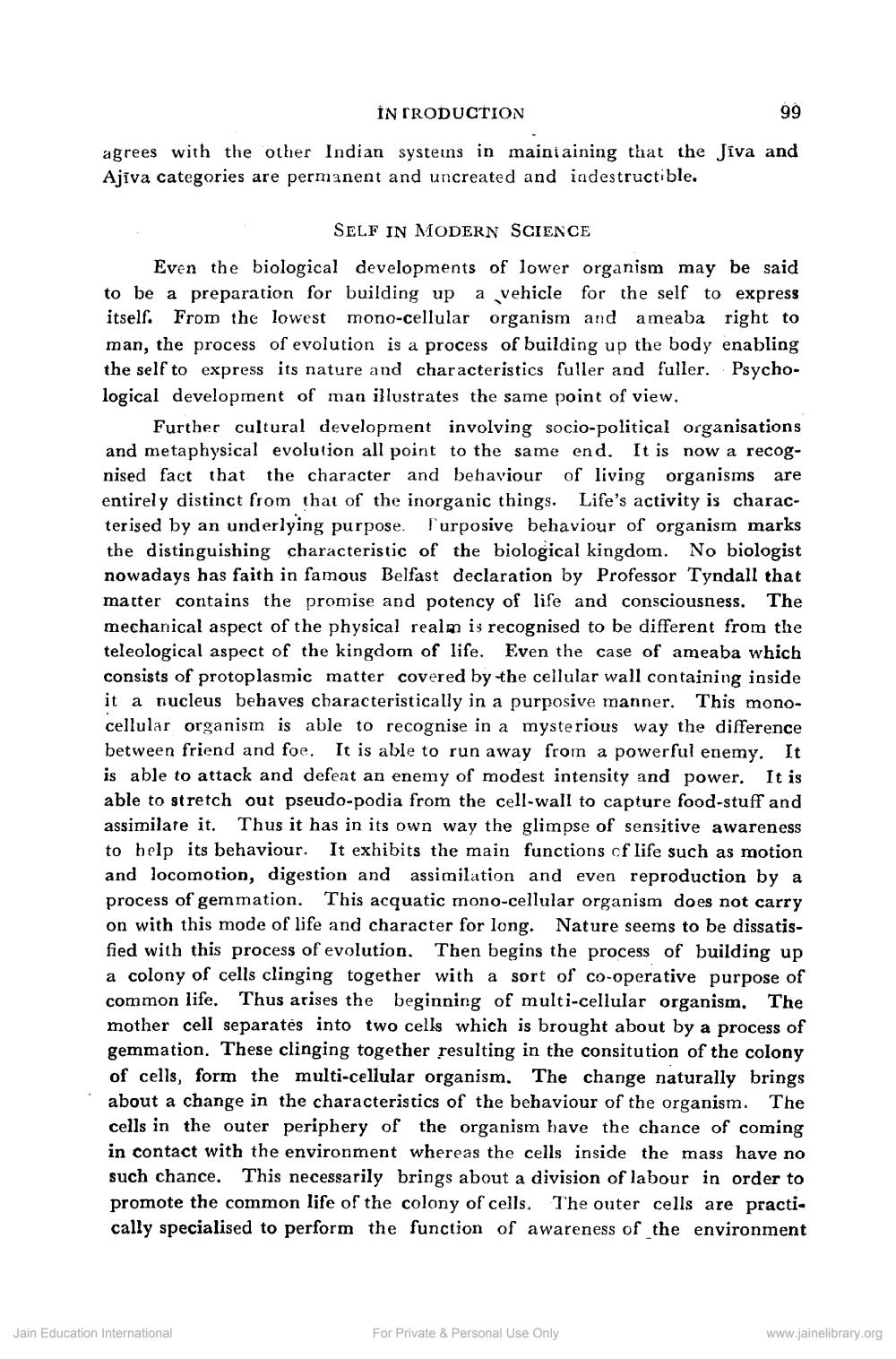________________
INTRODUCTION
99
agrees with the other Indian systeins in mainiaining that the Jiva and Ajiva categories are permanent and uncreated and indestructible.
SELF IN MODERN SCIENCE
Even the biological developments of lower organism may be said to be a preparation for building up a vehicle for the self to express
itself. From the lowest mono-cellular organism and ameaba right to man, the process of evolution is a process of building up the body enabling the self to express its nature and characteristics fuller and fuller. Psychological development of man illustrates the same point of view.
Further cultural development involving socio-political organisations and metaphysical evolution all point to the same end. It is now a recognised fact that the character and behaviour of living organisms are entirely distinct from that of the inorganic things. Life's activity is characterised by an underlying purpose. Purposive behaviour of organism marks the distinguishing characteristic of the biological kingdom. No biologist nowadays has faith in famous Belfast declaration by Professor Tyndall that matter contains the promise and potency of life and consciousness. The mechanical aspect of the physical realm is recognised to be different from the teleological aspect of the kingdom of life. Even the case of ameaba which consists of protoplasmic matter covered by the cellular wall containing inside it a nucleus behaves characteristically in a purposive manner. This monocellular organism is able to recognise in a mysterious way the difference between friend and foe. It is able to run away from a powerful enemy. It is able to attack and defeat an enemy of modest intensity and power. It is able to stretch out pseudo-podia from the cell-wall to capture food-stuff and assimilate it. Thus it has in its own way the glimpse of sensitive awareness to help its behaviour. It exhibits the main functions of life such as motion and locomotion, digestion and assimilation and even reproduction by a process of gemmation. This acquatic mono-cellular organism does not carry on with this mode of life and character for long. Nature seems to be dissatisfied with this process of evolution. Then begins the process of building up a colony of cells clinging together with a sort of co-operative purpose of common life. Thus arises the beginning of multi-cellular organism. The mother cell separates into two cells which is brought about by a process of gemmation. These clinging together resulting in the consitution of the colony of cells, form the multi-cellular organism. The change naturally brings about a change in the characteristics of the behaviour of the organism. The cells in the outer periphery of the organism have the chance of coming in contact with the environment whereas the cells inside the mass have no such chance. This necessarily brings about a division of labour in order to promote the common life of the colony of cells. The outer cells are practically specialised to perform the function of awareness of the environment
Jain Education International
For Private & Personal Use Only
www.jainelibrary.org




